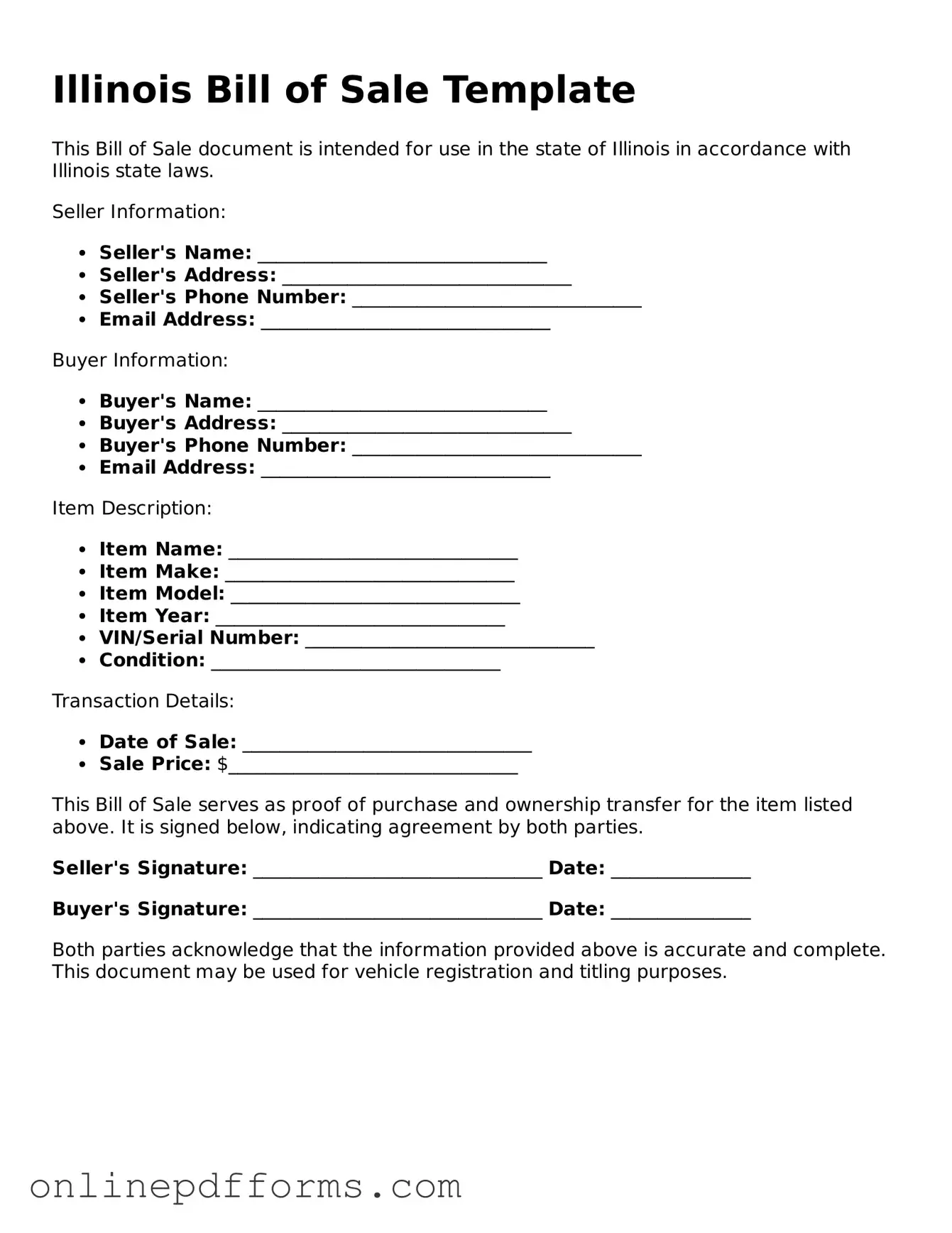The Illinois Bill of Sale form shares similarities with a Vehicle Title Transfer. Both documents serve as proof of ownership transfer. When a vehicle is sold, the seller must provide a signed title to the buyer, indicating that the vehicle has been legally transferred. This process is essential for registering the vehicle in the new owner's name, ensuring that the buyer has clear ownership and that the seller is no longer liable for the vehicle.
Another document akin to the Bill of Sale is the Purchase Agreement. This agreement outlines the terms and conditions of a sale, detailing what is being sold, the price, and any warranties or conditions. Like the Bill of Sale, a Purchase Agreement formalizes the transaction and protects both parties by clarifying their rights and responsibilities. It serves as a foundational document in many transactions, whether for goods or services.
A Lease Agreement also parallels the Bill of Sale in that it establishes a legal relationship between parties regarding property. While a Bill of Sale transfers ownership, a Lease Agreement allows one party to use another's property for a specified time in exchange for payment. Both documents require signatures from the involved parties, creating a binding contract that outlines the terms of use or sale.
The Affidavit of Ownership is another document that shares characteristics with the Bill of Sale. This affidavit serves as a sworn statement declaring ownership of an item, often used when a Bill of Sale is not available. In situations where proof of ownership is necessary, this affidavit can supplement or replace a Bill of Sale, providing legal assurance to the buyer.
A Receipt is similar to the Bill of Sale in that it acknowledges a transaction has taken place. While a Bill of Sale provides more detailed information about the item and the parties involved, a receipt typically confirms payment. Both documents can serve as proof in case of disputes, but a Bill of Sale offers more comprehensive protection by detailing the specifics of the sale.
The Warranty Deed also shares similarities with the Bill of Sale, particularly in real estate transactions. A Warranty Deed transfers ownership of property and guarantees that the seller has clear title to the property. Like a Bill of Sale, it protects the buyer by ensuring that the seller has the right to sell the property and that there are no undisclosed claims against it.
Another document that resembles the Bill of Sale is the Gift Deed. This document is used when property is transferred as a gift rather than a sale. While a Bill of Sale typically involves a monetary exchange, a Gift Deed formalizes the transfer of ownership without payment. Both documents require the signatures of the parties involved, providing legal recognition of the transfer.
Lastly, a Promissory Note can be compared to the Bill of Sale in transactions involving financing. A Promissory Note is a written promise to pay a specified amount of money at a future date. In situations where a buyer finances a purchase, the Bill of Sale documents the sale, while the Promissory Note outlines the payment terms. Together, they create a comprehensive record of the transaction, ensuring both parties understand their obligations.
